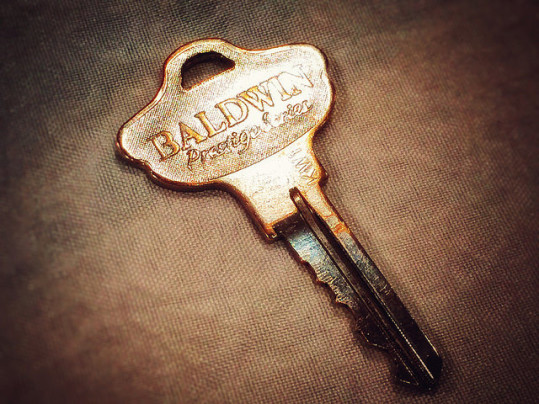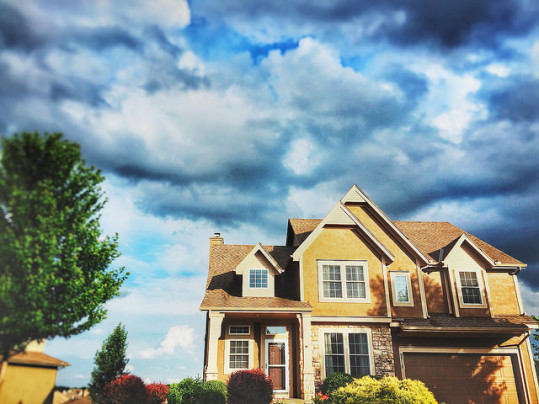So much time is spent analyzing monthly numbers and mortgage rate fluctuations that the big picture can sometimes get lost in all that data. Sure, paying attention to the short term movements of the market can give buyers and sellers an idea of what they should expect once they put their home up for sale or make an offer on a house, but in order to really know where the real estate market is headed in the future, there are some other more significant trends to watch. According to Freddie Mac’s most recent monthly insight report, increasing income inequality, the rising share of land costs, and the increase in land use restrictions will play a large role in determining who buys homes, where they buy, and how much they pay in the years to come. “The change in income distribution shifts the demand for housing – both the total demand for homeownership and the demand for different types of housing,” Sean Becketti, Freddie Mac’s chief economist, says. “The rising share of land costs shifts the supply of housing – houses cost more than before because of the higher cost of the land component of the house. And land use restrictions limit the supply of more-affordable housing in richer states. No analysis of the future housing market is complete without considering them.” More here.
Archive for November 2016
Buying Cheaper Than Rent In Many Markets
Because buying a home is such a major undertaking, it’s easy to assume that it’s more expensive than finding a place to rent. That, however, isn’t necessarily true. In fact, buying remains the more affordable option in many markets across the country. A recent report from Zillow highlights some of the reasons why that is. For one, when home prices crashed, rental costs didn’t. That means, rent continued to head upward while home values were making up for lost ground. So, though home prices have largely recovered from their post-crash lows, they remain below their peak in most areas. The other reason buying a house remains the more affordable option is mortgage rates. While they’ve been climbing recently, they are still low by historical standards. And, with historically low rates helping to alleviate some of the effects of higher prices, affordability and monthly housing costs are kept under control. Going forward, Zillow predicts rental cost growth will begin to fall in the coming year. That’s good news for the real estate market, as it will provide some relief to younger renters who may struggle to save for a down payment on their first home. More here.
New Home Sales Up 18% Over Last Year
Sales of newly built homes fell 2 percent in October, according to new numbers from the U.S. Census Bureau and the Department of Housing and Urban Development. But, despite the month-over-month dip, sales were still strong when compared to the same time last year. In fact, October sales were 17.8 percent higher than the year before. Part of the reason for this is that monthly sales figures are typically volatile, while year-over-year numbers provide a better look at the big picture. And so far this year, low mortgage rates, a stronger labor market, and high buyer demand have led to overall gains in both new and existing home sales that should push sales to levels last seen before the housing crash. According to Doug Berson, chief economist at Nationwide, there may be reason to expect more improvement in the future. Berson told ABC News the millennial generation should provide increasing demand for single-family homes in the years ahead. “Historically, there is a significant uptick in homeownership at the age of 35 – an age that the oldest millennials are reaching now,” Berson said. Regionally, new home sales were down in the Northeast, Midwest, and South, while the West saw improvement. More here.
Higher Mortgage Rates Bring The Buyers Out
For the fourth straight week, average mortgage rates increased from the previous week. In fact, according to the Mortgage Bankers Association’s Weekly Applications Survey, rates were up across all loan categories, including 30-year fixed-rate loans with conforming and jumbo balances, loans backed by the Federal Housing Administration, and 15-year fixed-rate loans. Michael Fratantoni, the MBA’s chief economist and senior vice president of research and technology, says the increases are being driven by expectations of future economic growth and inflation. “Mortgage rates have continued to move higher in the post-election period, as investors worldwide are looking for increases in growth and inflation, with the 30-year mortgage rate reaching its highest weekly average since the beginning of 2016,” Fratantoni said. But while the highest rates since January have caused refinance activity to fall, prospective home buyers look to be locking in low rates before they go up any further. Last week saw a 19 percent increase in demand for loans to buy homes. The spike puts purchase loan demand 11 percent above where it was at the same time last year. The MBA’s weekly survey has been conducted since 1990 and covers 75 percent of all retail residential mortgage applications. More here.
Home Sales Hit Highest Pace In A Decade
Autumn may typically be the time of year when home sales start to slow down but new numbers show sales of previously owned homes up for the second straight month and at their highest annual pace since February 2007. The data, from the National Association of Realtors, shows October sales up 2 percent over the month before and 5.9 percent above last year’s estimate. Lawrence Yun, NAR’s chief economist, says the past two months have been an autumnal revival for the housing market. “October’s strong sales gain was widespread throughout the country and can be attributed to the release of the unrealized pent-up demand that held back many would-be buyers over the summer because of tight supply,” Yun said. “The good news is that the tightening labor market is beginning to push up wages and the economy has lately shown signs of greater expansion. These two factors and low mortgage rates have kept buyer interest at an elevated level so far this fall.” Sales were up in all regions, with the largest gains in the South, where home sales rose 2.8 percent. Also in the report, the typical home stayed on the market for 41 days in October, though 43 percent of homes sold in less than a month. More here.
How Long Does The Typical Home Search Last?
You don’t want to be rushed when choosing a home to buy. It’s a big decision and one you’ll be living with for many years to come. So it’s best to take your time and only make an offer when you find a house that’s really right for you. But though that’s true, you may wonder along the way if you’re taking longer than usual or seeing more homes than the typical buyer. So how long does the usual home buyer search for a home? Well, according to the National Association of Realtors, the length of the median home search has gotten longer over the past 30 years. In fact, buyers in 1987 searched a median of seven weeks before buying a house. In recent years, that’s risen to as much as 12 weeks – though it’s held steady at 10 weeks since 2014. During those 10 weeks, buyers typically look at 10 homes before finding one that fits their needs. That’s fewer than it used to be, but not by much. The median number of homes buyers see before purchasing has generally been between 10 and 12 homes for the past 30 years. More here.
Rising Number Of Homeowners Are Equity Rich
Equity rich may not be a phrase you’re familiar with but it refers to homeowners whose loan-to-value ratio is 50 percent or lower – meaning homeowners whose mortgage is less than half of their home’s appraised value. Simply put, a homeowner’s loan-to-value ratio refers to the amount of their home’s value that is borrowed. For example, if you were buying a house valued at $100,000 but only borrowing $50,000 to purchase it, your loan-to-value ratio would be 50 percent. Naturally, the lower a homeowner’s ratio, the more equity that homeowner has. A recent report from ATTOM Data Solutions looked at homeowners across the country and found 23.4 percent of all homeowners with a mortgage were equity rich, an increase of more than 2.6 million from the same time last year. Daren Blomquist, senior vice president at ATTOM, says the combination of people living in one place for longer periods and continued home price increases have led to the improvement. “Median home prices increased on a year-over-year basis for the 18th consecutive quarter in Q3 2016, and homeowners who sold in the third quarter had owned their home an average of 7.94 years – a new high in our data and substantially higher than the average homeownership tenure of 4.26 years pre-recession,” Blomquist said. More here.







